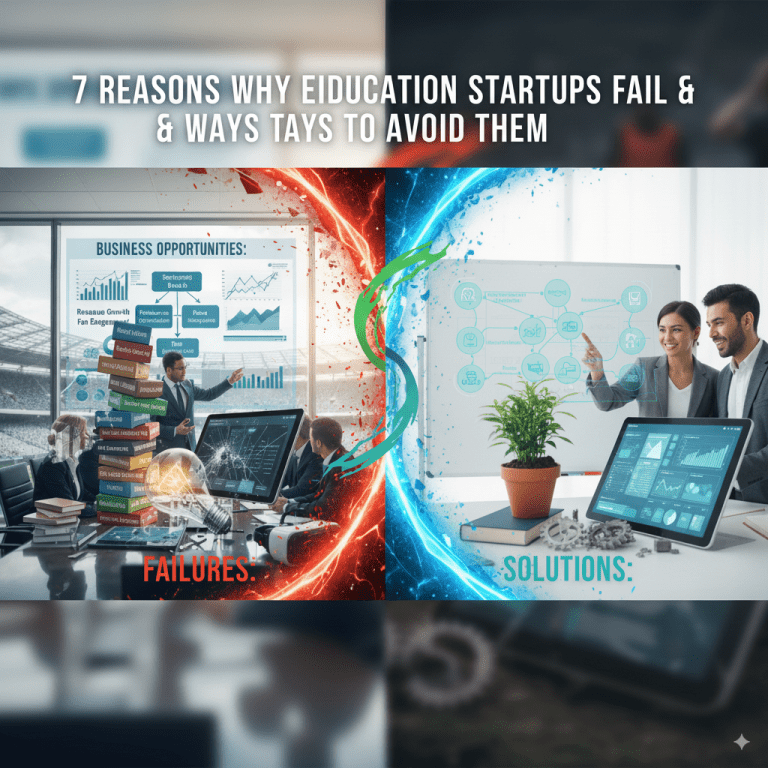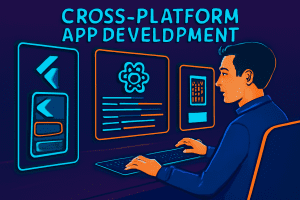Introduction
The EdTech industry promises to transform education through technology, offering innovative learning experiences and scalable solutions. However, despite rapid growth and significant investment inflows, many education startups fail within the first few years. Understanding the common reasons for failure and how to overcome them is crucial for entrepreneurs aiming for long-term success and impact.
This blog explores 7 key reasons why education startups often struggle, supported by market insights, and offers actionable strategies for thriving in this competitive sector. For deeper understanding of AI-powered education technology and digital transformation, explore TechOTD’s AI Services and their technology blog.
1. Poor Market Research
Many education startups jump into product development without a solid grasp of the market dynamics, user needs, and ecosystem realities. They often mistake excitement for demand, leading to products that don’t solve real educational challenges or fit into school environments.
How to avoid:
-
Conduct thorough market and competitor analysis.
-
Engage educators, learners, and administrators early for feedback.
-
Validate product ideas with pilot studies or MVPs to ensure real-world applicability.
2. Lack of Patience
Education adoption cycles are significantly slower than in other industries. Schools and institutions require time to trial, accept, and integrate new tools into rigid curriculums and budgets. Many startups fail because they expect rapid growth and give up prematurely.
How to avoid:
-
Set realistic expectations about timelines (often 5-10 years for widespread adoption).
-
Focus on steady user engagement milestones rather than quick scaling.
3. Unclear Distinction Between Users and Buyers
Confusing the end-users (students, teachers) with paying customers (schools, parents, districts) often leads to misaligned marketing, pricing, and product design strategies. Solutions must cater to the needs of all stakeholder groups in education.
How to avoid:
-
Map out all stakeholders and their specific requirements.
-
Design your product and outreach strategies accordingly.
4. Overuse of Technology Without Educational Value
EdTech startups sometimes focus on trendy technologies—AR, VR, AI—without ensuring these add tangible learning benefits. This increases costs and complexity, alienating users if technology does not improve outcomes.
How to avoid:
-
Prioritize pedagogical effectiveness over novelty.
-
Pilot technology features to prove value before wide release.
5. Lack of Transparency and Collaboration with Educators
Failing to involve teachers and educational institutions in development leads to lack of buy-in and resistance. Attempts to replace educators or disregard classroom realities often doom products.
How to avoid:
-
Collaborate with educators throughout development cycles.
-
Create transparent, teacher-friendly products that complement teaching.
6. Too Many Features Leading to Complexity
Feature overload makes platforms confusing and hampers usability. Startups with cluttered apps or platforms struggle with adoption and retention.
How to avoid:
-
Develop a minimal viable product (MVP) focusing on a core problem.
-
Use data analytics to guide gradual feature expansion based on user needs.
7. Insufficient User Training and Support
Lack of onboarding, training, and responsive support leads users to abandon even the best platforms. Many EdTech startups underestimate the training needs of educators and learners.
How to avoid:
-
Invest in comprehensive training resources and support systems.
-
Continuously collect user feedback to improve usability and support.
Conclusion
Success in education technology requires more than innovative ideas or strong funding. It demands deep market knowledge, collaboration with educators, simple yet powerful product design, and long-term commitment. By avoiding these common pitfalls and leveraging strategic partnerships, EdTech startups can create impactful and sustainable solutions that transform learning.
For expert guidance, explore how TechOTD combines AI, product development, and education insights to support startups in the education sector. Discover more tips and digital trends on the TechOTD Blog.
FAQs
Q1: Why do many EdTech startups fail within the first 5 years?
Lack of proper market research and misunderstanding the slow adoption cycles in education are major reasons.
Q2: How important is teacher collaboration?
Critical. Products must align with educators’ needs and workflows to gain acceptance.
Q3: Should startups always use the latest technology?
No. Technology should be adopted only when it adds educational value.
Q4: How can startups sustain long-term growth?
By focusing on core user needs, iterative development, and investing in user training.
Q5: What initial steps should EdTech startups take for product development?
Conduct thorough market validation, develop an MVP, and engage educators from the start











